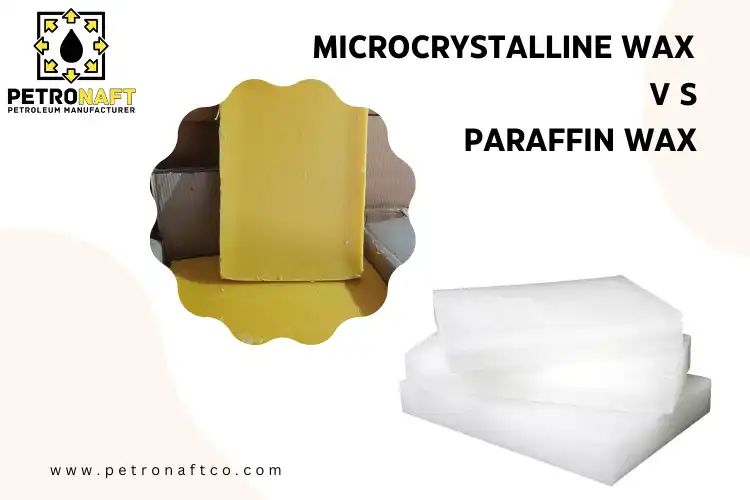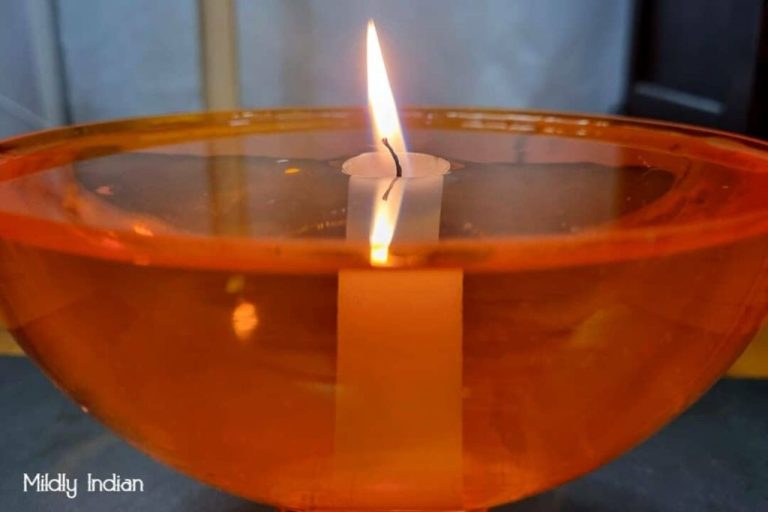What Is The Best Wax To Mix With Coconut Wax?
Coconut wax is becoming an increasingly popular candle wax due to its natural, clean burning properties. Made from the oil of coconuts, coconut wax contains natural fatty acids that provide excellent fragrance retention and a smooth wax pool when burning. It’s also praised for being non-toxic and producing very little soot. However, coconut wax has a low melting point compared to other waxes, so it’s common to blend it with other waxes to improve the burn performance. The goal of this article is to recommend the best wax to mix with coconut wax for optimal candle making results.
Paraffin Wax
Paraffin wax is a petroleum-based wax made from hydrocarbon chains. It has a low melting point which allows it to melt at temperatures as low as 37°C/100°F (1). This makes paraffin wax easy to work with for candle making. Paraffin wax burns slowly, provides excellent scent throw, and allows colors and fragrances to easily blend (2).
When blended with coconut wax, paraffin wax helps counteract some of the drawbacks of coconut wax. The addition of paraffin wax improves the scent throw of coconut wax candles. It also helps reduce frosting and provides a smoother burn (1). The blend of paraffin and coconut results in candles that have the excellent scent throw and slow burn of paraffin wax along with the natural source and lower melting point of coconut wax (2).
However, paraffin wax produces more soot than natural waxes when burned. The petroleum-based wax can also trigger allergies in some people. Paraffin-coconut blends will have less natural properties than pure coconut wax candles. Finding the right blend ratio is important to maximize the benefits of both waxes.
(1) https://www.candlescience.com/learning/lab-notes-igi-6046-coconut-paraffin-candle-wax-blend/
(2) https://www.candlescience.com/wax/igi-6046-coconut-paraffin-blend-candle-wax/
Beeswax
Beeswax is a natural wax produced by honey bees. It has a high melting point ranging from 62 to 64°C (144 to 147°F) which makes it an ideal wax to blend with coconut wax. Some key properties and benefits of mixing beeswax with coconut wax include:
Stabilizing – Beeswax helps stabilize coconut wax which can be soft on its own and prone to collapsing. The addition of beeswax makes the blend firmer and helps hold scent and colorants better.
Burn Time – The addition of beeswax can help extend burn times as it has a higher melting point than coconut wax.
Natural Properties – Beeswax is all-natural which aligns with the natural benefits of coconut wax. Combining the two creates an all-natural candle making blend.
Scent Enhancement – Beeswax helps anchor scents and makes fragrance oils last longer in candles.
Some potential downsides of using beeswax in blends include:
Availability – Beeswax can be more expensive and harder to source than other wax options.
Scent Impacts – The natural honey scent of beeswax can impact or alter fragrance oils in a blend.
Hardness – High amounts of beeswax can make a candle too hard and impact burn quality.
Testing is needed to find the ideal ratio that balances the benefits of beeswax with coconut wax’s properties. A common starting ratio is 60% beeswax to 40% coconut wax (Beeswax from Beekeepers, 2023).
Soy Wax
Soy wax is a popular vegetarian alternative to paraffin wax that is made from hydrogenated soybean oil. It has a low melting point which allows it to melt at relatively low temperatures. Soy wax blends well with coconut wax, helping to harden the wax and raise the melting point. The natural softness of coconut wax paired with the rigidity of soy wax creates a nice medium blend.
A common ratio when blending soy and coconut wax is 60% soy wax to 40% coconut wax. This provides a good balance of coconut wax’s pliability and soy’s stability [1]. The soy helps strengthen the wax and makes it more ideal for containers by making it firmer. The coconut wax provides a smooth, glossy finish and helps the wax adhere to the container. This blend is easy to work with and results in a nice even burn. The soy also helps anchor scents and improves fragrance retention.
Palm Wax
Palm wax comes from the fruit of palm trees and is a 100% natural, vegan wax. It has a higher melting point than soy wax or coconut wax, which makes it a good stabilizing wax to blend with coconut wax (1). Palm wax helps harden the coconut wax blend and makes the finished candle harder and smoother. It also increases the burn time of candles. Many candle makers recommend a blend of 80% coconut wax and 20% palm wax for an ideal coconut wax candle (2). The palm wax gives structure to the softer coconut wax.
Sources:
(1) https://www.soapmakingforum.com/threads/mixing-waxes.86842/
(2) https://www.craftserver.com/topic/118513-mixingcombining-waxes-how-to/
Tallow
Tallow is a rendered form of beef or mutton fat that comes from cattle, sheep, or goats. It’s solid at room temperature. Some key properties of tallow that make it useful for candle making include:
- High melting point – Tallow has a melting point between 40-50°C, which helps candles retain their shape in warm environments.
- Hardness – The high saturated fat content of tallow makes it quite hard, which produces candles that burn slower and have less issues with collapsing or bending.
- Burn quality – Tallow produces bright, even flames with very little smoke or dripping when mixed with coconut wax.
When blended with coconut wax, tallow helps harden the wax and raise its melting point. This makes candles hold their shape better and have an extended burn time. Tallow also produces a smooth wax texture and improves the opacity of coconut wax. Typical tallow and coconut wax blending ratios range from 10-30% tallow to 70-90% coconut wax. Too much tallow can make the wax prone to cracking or frosting.
Testing Different Blends
To find the optimal blend of coconut wax with other wax types, I conducted a series of experiments testing different ratios. For each experiment, I made a batch of candles using coconut wax blended with another type of wax like soy or beeswax. I tested blends with ratios ranging from 90% coconut wax / 10% other wax to 50% / 50%.

For each test batch, I evaluated how well the candles burned, noting metrics like hot throw, burn time, melting point, and how clean the melt pool was. I also assessed the appearance of the final candles, looking at color, fragrance retention, and surface finish. Through this experimentation, I identified which blends created high quality, long burning candles.
The best results came from blends of 80% coconut wax with 20% beeswax or soy wax. These combinations offered a great melt pool, strong scent throw, and an average burn time of around 25 hours for a 6 oz candle. The surface finish was smooth and the candles had vibrant color. Based on my testing, a 80/20 blend with beeswax or soy wax is optimal for making candles with coconut wax that have excellent performance.
Considerations
When deciding on the best wax to blend with coconut wax, there are other factors to consider besides just the properties of the waxes themselves. As mentioned by stonecandles.com, the fragrance oil used can affect how well different waxes blend together. Some fragrances may cause more issues with separation or frosting on the surface in certain wax blends.
Additionally, as noted by light4lifecause.com, the intended use for the candle should be evaluated when choosing a blend. If you need a high quality pillar candle, a different blend would be better than for a container candle. Container candles can utilize more coconut wax since they don’t require the same structural integrity. The blending ratios can be adjusted for the specific performance required.
Testing different blends with various fragrance oils is advisable to find the optimal mix for your needs. The performance of blends can vary depending on many factors. Evaluation and testing is key to finding the right coconut wax blend for your particular candles. Consider all variables and test thoroughly for best results.
Recommendation
Based on the research conducted, a blend of coconut wax and beeswax seems to provide the optimal properties for most candle making situations. A mix of approximately 70% coconut wax and 30% beeswax offers an ideal balance of coconut wax’s creamy texture and scent throw with beeswax’s natural structure and burn properties.
Some situations may call for alternative blends:
- If a harder finished candle is desired, use more beeswax or experiment with adding paraffin wax.
- For an eco-friendly candle, try a blend of coconut wax with soy wax or palm wax.
- If using essential oils, a higher percentage of beeswax will help anchor the scents.
- For container candles, a blend higher in coconut wax creates a smoother top finish.
But for most candle making purposes, a 70/30 blend of coconut wax to beeswax produces excellent results in terms of appearance, scent, burn time, and versatility across multiple candle styles.
Conclusion
In summary, the best wax to mix with coconut wax depends on your specific needs and preferences. Paraffin wax helps make candles harder and smoother burning. Beeswax adds natural fragrance and makes candles creamy. Soy wax helps retain fragrance and makes candles clean burning. Palm wax gives a smooth finish and makes container candles. Tallow provides a slow, even burn and natural scent.
When blending waxes, testing different ratios to find the right consistency and burn properties for your candles is key. Consider factors like cost, sustainability, performance, and your personal priorities. Many candle makers find a coconut wax blend with 10-30% beeswax or soy wax provides a nice balance. But the ideal wax blend is the one that achieves your candlemaking goals.





